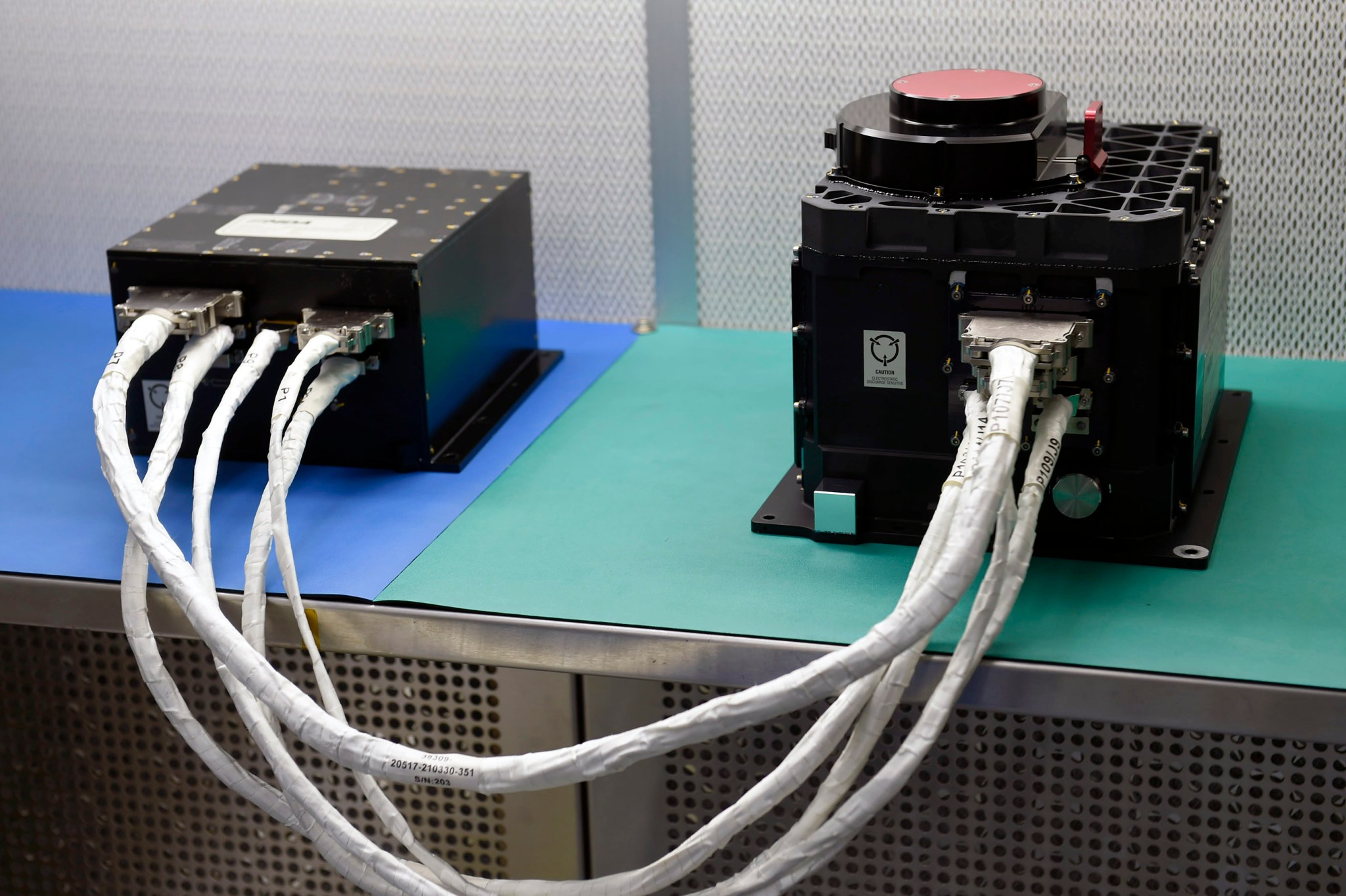A sophisticated laser-based mapping instrument has arrived at Lockheed Martin Space Systems in Denver for integration onto NASA’s Origins, Spectral Interpretation, Resource Identification, Security-Regolith Explorer (OSIRIS-REx) spacecraft.
The OSIRIS-REx Laser Altimeter (OLA), contributed by the Canadian Space Agency (CSA), will create 3-D maps of asteroid Bennu to help the mission team select a sample collection site.
“The OSIRIS-REx Project has worked very closely with our partner CSA and their contractor MDA to get this critical instrument delivered to the spacecraft contractor’s facility,” said Mike Donnelly, OSIRIS-REx project manager from NASA’s Goddard Space Flight Center in Greenbelt, Maryland. “We are very pleased with the performance of the instrument and look forward to its contribution to our mission.”
OLA is an advanced LIDAR (Light Detecting and Ranging) system that will scan the entire surface of the asteroid to create a highly accurate, 3-D shape model of Bennu. This will provide mission scientists with fundamental data on the asteroid’s shape, topography (distribution of boulders, rocks and other surface features), surface processes and evolution. An accurate shape model will also be an important tool for navigators as they maneuver the OSIRIS-REx spacecraft around the 500-meter-wide (0.3-mile-wide) asteroid. In exchange for providing the OLA instrument, CSA will receive a portion of the returned asteroid sample for study by Canadian scientists.
“OLA will measure the shape and topography of Bennu to a much higher fidelity and with much greater efficiency than any planetary science mission has achieved,” said Michael Daly, OLA instrument lead at York University, Toronto. “This information is essential to understanding the evolution and current state of the asteroid. It also provides invaluable information in aid of retrieving a sample of Bennu for return to Earth.”
After launch in September 2016, the OSIRIS-REx spacecraft will travel to the near-Earth asteroid Bennu and bring at least a 60-gram (2.1-ounce) sample back to Earth for study. Scientists expect that Bennu may hold clues to the origin of the solar system and the source of water and organic molecules that may have made their way to Earth. OSIRIS-REx’s investigation will also inform future efforts to develop a mission to mitigate an asteroid impact on Earth, should one be required.
“The data received from OLA will be key to determining a safe sample site on Bennu,” said Dante Lauretta, principal investigator for OSIRIS-REx at the University of Arizona, Tucson. “This instrument is a valuable addition to the spacecraft, and I appreciate our Canadian partners’ hard work and contribution to the OSIRIS-REx mission.”
The laser altimeter was built for CSA by MacDonald, Dettwiler and Associates Ltd. (MDA) and its partner, Optech. OSIRIS-REx is scheduled to ship from Lockheed Martin’s facility to NASA’s Kennedy Space Center, Florida in May 2016, where it will undergo final preparations for launch.
NASA’s Goddard Space Flight Center in Greenbelt, Maryland, provides overall mission management, systems engineering and safety and mission assurance for OSIRIS-REx. Dante Lauretta is the mission’s principal investigator at the University of Arizona. Lockheed Martin Space Systems in Denver is building the spacecraft. OSIRIS-REx is the third mission in NASA’s New Frontiers Program. NASA’s Marshall Space Flight Center in Huntsville, Alabama, manages New Frontiers for the agency’s Science Mission Directorate in Washington.
For more information on OSIRIS-REx visit:
https://www.nasa.gov/osiris-rex
and
http://www.asteroidmission.org
Nancy Neal Jones
NASA’s Goddard Space Flight Center, Greenbelt, Maryland
301-286-0039
Nancy.N.Jones@nasa.gov
























